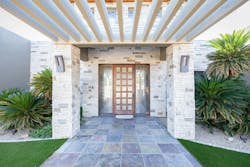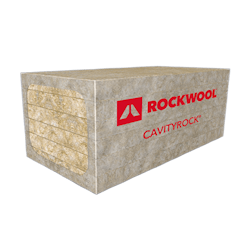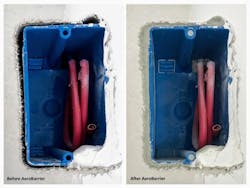7 Ways to Increase Home Resiliency in the Face of Climate Change
Custom home builders in high risk areas such as California are starting to look towards climate-resilient designs as extreme weather events become more common due to climate change.
Rich Williams, vice president of Alliance Green Builders based in San Diego, says more of his clients rebuilding their homes after fires are seeking ways to make their homes more resistant to natural disasters. Although he notes that fire resiliency isn’t currently trending in home building, he thinks it will be soon as climate disasters affect larger populations.
Blackouts and wildfires continue to plague parts of California this week as residents are forced to evacuate, according to the Los Angeles Times. Even when the initial flames depart, bush fires, smoke damage, decreasing home prices, and continued power issues are potential problems for homeowners.
“Right now we have a lot of fire anxiety,” Williams says. “The fires used to be somewhere else. But now they’re all over the place. If you go to the California fire map, we’re on fire a lot. You never know what’s going to happen.”
No matter where you build, some type of natural disaster is a constant threat. But there are things every building professional can do to increase the protection of their homes. Here are seven ways to build or remodel more resilient homes:
Arm the house with a solar panel and battery system for blackouts
When emergency systems announced a mandatory evacuation, some Southern California residents missed the message because of a planned blackout. Nearly 1 million homes went dark this week as Pacific Gas & Electric shut off power to avoid wildfires. Williams says that a way to prepare a home for a power outage is to use a solar panel system. Though the solar panel connected to the grid will switch off when the grid goes dark, the system’s battery will store the energy a house can use in emergencies. He suggests integrating the German Sonnen battery for functionality and for its aesthetic design that doesn’t cause an eyesore. Sonnen says the smart battery “provides true energy autonomy by enabling homes to generate and store their own energy, even during power outages.”
Ecolinx by Sonnen
Pick a fire-resistant insulation
Insulation can play a part in how fast a house burns. In fact, some insulators increase the heat and speed the ignition of materials. Mineral wool, such as Rockwool, insulates a home while withstanding up to 1,800 degrees fahrenheit, according to Rockwool’s website. Having a high ignition point reduces the chance of a flashover, which is when the room heats up so fast that everything catches on fire at once. Mineral wool (also called stone wool) helps contain fires and prevent them from spreading.
Rockwool Cavityrock Exterior Insulation
Prevent smoke damage by eliminating gaps
One threat from wildfires is smoke damage. Williams says that even homes miles away from a wildfire can suffer smoke damage. One way to build to limit smoke damage is to use envelope sealing technology such as Aerobarrier to keep the smoke out (disclaimer: Williams is also Vice President of Western Aerobarrier). William’s company uses Aerobarrier to seal houses and make them more energy efficient, but another perk is that smoke has a tougher time getting into the house.
Aerobarrier sealing technology, before and after
Coat outdoor wood with sodium borate
Ask any Boy Scout or Girl Scout, wood is one-third of the fire equation. In regards to wildfires and houses, the result can be disastrous. One way to mitigate the effects of fire on wood is to coat it with a sodium borate. A plus? Williams says sodium borate will also protect against termite invasions. Two birds, one stone.
Avoid wood all together
Another way to minimize fire damage is to use non-wood building materials. Concrete, a material Williams suggests, is fire resistant, thus using it avoids the flammability of wood. Boral, a company that specializes in exterior building products, offers selections of stone and concrete roof tiles, siding, and trim among other products.
Boral Concrete Roofing
Use laminated glass to prevent shattering
Using laminated glass to reduce the chance of windows breaking is crucial, according to Williams. He says that many of the fires in houses start because flying debris break the glass and let embers in, setting fire to the furniture and wood. The National Fire Protection Association agrees, saying that “research points to embers and small flames as the main way that the majority of homes ignite in wildfires.”
Find a way to source fresh water
If an emergency event occurs, it is hard to say how long people may be trapped in their houses due to outside conditions or if they might experience a resource shortage. Williams notes that one of his clients wants to include an atmospheric water generator system in the house. In an emergency situation where resources are cut off, atmospheric water generator systems can lift water particles from the air, treat them and stores drinking water in a water tank. One company, Watergen, is designing a new home-friendly version of their more industrial-sized generators.
Watergen's Genny is available for preorder.
Consider these tips when building a homes in high risk areas to make sure homebuyers have the best chance against natural disasters and emergency events.





